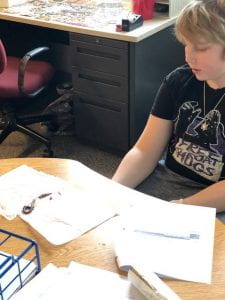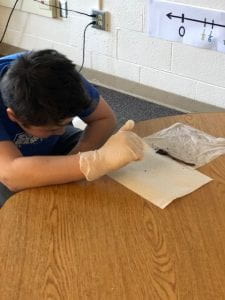Jan
2020
Abiotic/Biotic Factors – 6th Science
This past week we finished up the final lessons of our unit on what causes populations to change by learning about abiotic and biotic factors and how those factors impact an ecosystem.
As always, the 6th grade scientists were given the task of figuring out how abiotic factors affect living things (biotic factors) – in our case, we used worms. The scientists were asked to see how the worms reacted to a dry area vs a wet, damp area. However, before conducting the experiment the scientists were asked the following question – “Why is it necessary to conduct multiple trials of the same experiment?”
The scientists had an answer pretty much immediately. They knew that we had to conduct multiple trials to get accurate evidence. The more times we test something, the more we minimize the impact of errors.
Because of this reasoning we knew we had to test our worms multiple times.
Through each of our 9 scientists 6 trials we were able to conclude that the worms preferred the damp environment over the dry environment. Although, a few worms really enjoyed the cold table.
Along with this, it allowed us to understand better how abiotic factors like a damp or dry environment can really impact biotic factors in an ecosystem. This lead to the scientists making connections – for example, many of them mentioned how plastic (an abiotic factor) can badly affect many of the organisms in that same ecosystem (a biotic factor).
The scientists will have an assessment on our unit next Monday. They have worked so hard and I have loved being a part their rich discussions and ideas.
Our next unit coming up is focused on chemistry where students will be investigating the question, “How Can I Smell Things from a Distance?”
Stay Tuned!
Happy Monday,
Gev. McAdams






nkaufman
January 29, 2020 at 9:25 pm (4 years ago)That next unit looks really interesting. I wonder if you could/will include some psychology terms in there (such as adaptation, threshold) or if that is above and beyond what you are looking for.